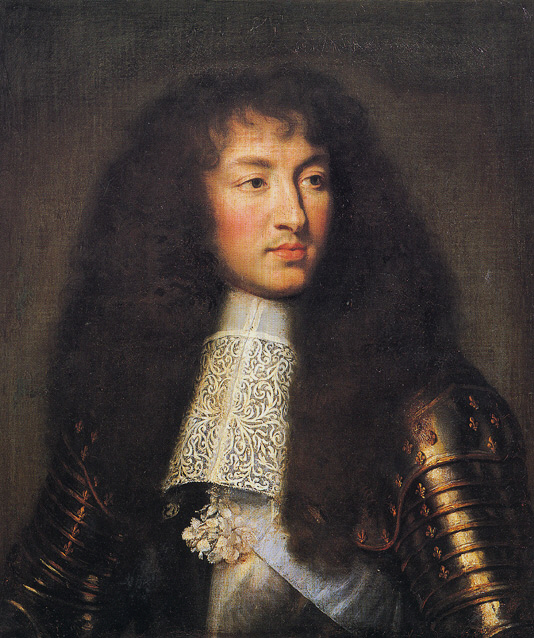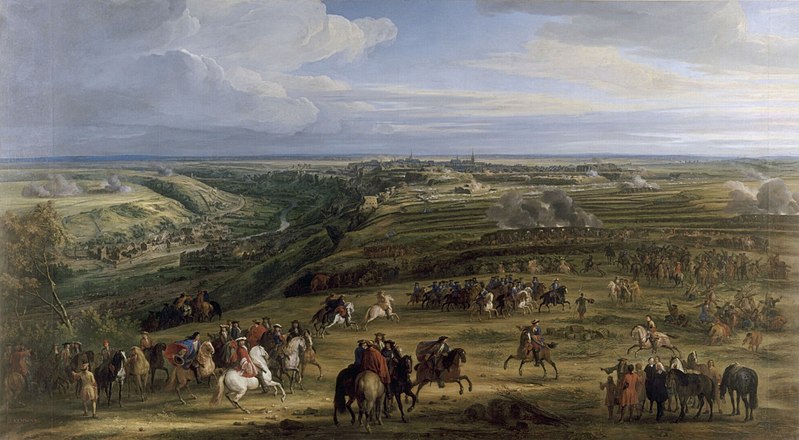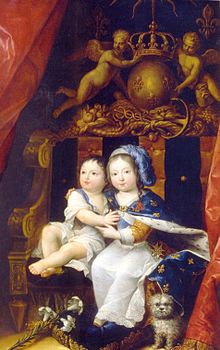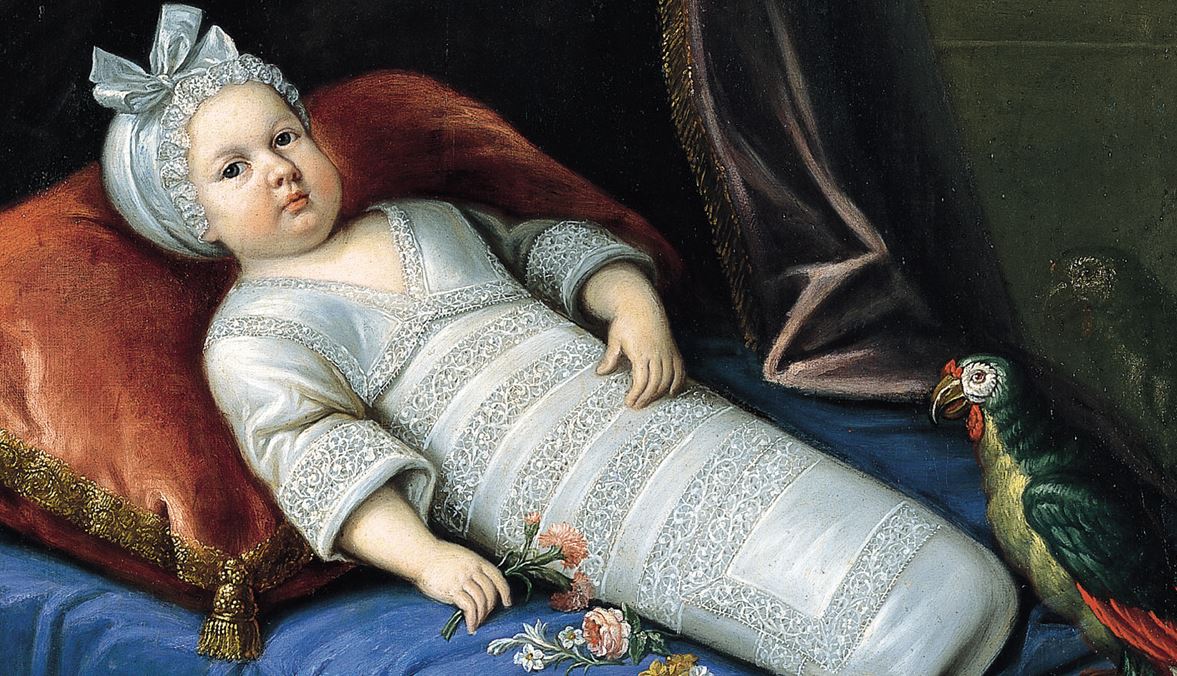Louis XIV and the measles
The measles are a very serious contagious infectious disease caused by a virus. It takes 10 to 12 days after exposure for the symptoms to show and then 7 to 10 days for the whole thing to vanish…. if one survives it. La rougeole, as the French call it, was a killer in the 17th century and it still is one today in some parts of the world.
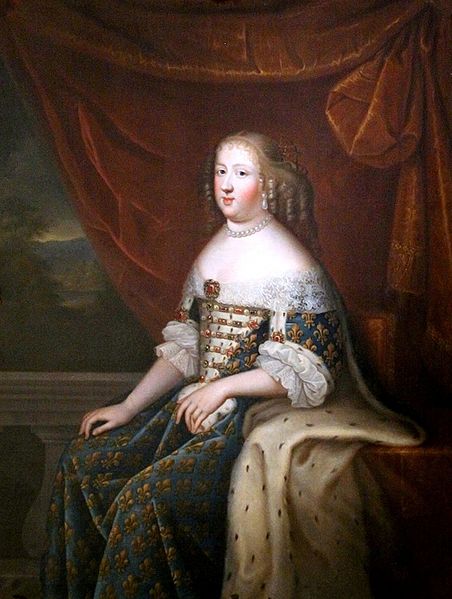
The Sun King’s brother Philippe, caught the measles in autumn of 1647. Monsieur’s condition was very critical for a while, also because he had dysentery, which led to de-hydration. Back then Anne d’Autriche left her little Philippe in care of servants in Paris and went with Louis to Fontainebleau, in order to prevent Louis getting infected as well. Anne just went for a brief visit to Paris as Philippe was on the brink of life and death. By the time Philippe was cured, Anne found him so pale and thin that it was hard to recognise him.
Marie-Thérèse d’Autriche, Louis XIV’s wife, caught the measles in early 1663 and forwarded the disease to her husband. Thanks to the Journal de la santé du Roi, we have quite the detailed insight into what happened and how Louis’ measles were treated.
The Sun King contracted the measles at the end of May 1663: “The King, as he woke up on Monday, May 28, found himself, contrary to his usual state, uneasy with a pain in the head, accompanied by restlessness, weariness and slight dampness, and having passed badly through the night. All these symptoms, with the inequality and the speed of the pulse, gave apprehensions of what might happen next, having the fresh memory of the Queen’s measles, of which she was just now recovering.”
Louis XIV’s premier médecin du Roi -chief-doctor- at that time was Antoine Vallot. Monsieur Vallot was in service of the King already since 1652 and thus knew all about Louis’ body functions. He was at once worried, hearing of Louis’ complaints that morning, that he might have contracted measles.
Monsieur Vallot, on the same day, recommended a bloodletting, to which Louis agreed willingly. He had in mind to relocate himself, and the Queen, from Paris to Versailles the next day. Louis was the kind of person, who hated when something did not go as he wanted… even if it was just changing locations. It was suggested the King and Queen should stay in Paris, but Louis did not want to hear anything about it. Louis endured the bloodletting patiently in the morning, did his kingly-business during the day, and some more kingly-business of a different kind in the evening, after the administration of a clyster.
Louis slept better that night and Monsieur Vallot recorded that the symptoms seem to have gone by the morning, which however did not free him from his suspicions. Vallot again tried to keep the King in Paris, but Louis did not want to hear any of it again and left for Versailles, in company of the Queen, after diner. (Diner meant a midday meal back then, as in today’s lunch. Today diner is commonly used for the evening meal.) Once arrived at Versailles, Louis enjoyed a stroll in the spring-gardens… and then had to retire early. The symptoms had returned. Louis again felt very fatigued and also restless, his headache was back as well and he showed signs of fever. Monsieur Vallot ordered another clyster to be administrated at once in order “to make him sleep“.

He writes: “The night from Tuesday to Wednesday was much more worrying than the previous ones. The fever increased a lot, and came with a headache and strong sweating, which lasted a good part of the night. The next day, around six o’clock in the morning, having found the King in this state, I had to confirm to him what I had told him the previous evening, that there was no longer any doubt that it was measles. Which obliged me to order another bleeding, noticing a extraordinary fullness in his Majesty and a furious boiling of the blood as a whole, with an overwhelming nature.”
The King was bled at two o’clock in the afternoon and Monsieur Vallot notes that it seemed to have helped to relax his Majesty a little… Another bleeding was planned for the evening, but by then the symptoms were there with all their force. The fever was higher than it was before and Louis felt worse and worse. His body was checked for measles-spots and plenty of them were discovered on the King’s back and legs. The high fever made Louis have sweating fits throughout the day. “The night from Wednesday to Thursday ” Vallon says, “was more unpleasant and worrying than all the previous ones.”
Louis was in quite the bad condition the next day: “On Thursday morning, May 31, the redness was already widespread on the body, and particularly on the face, with more fever and restlessness.” This restlessness was not constant, it would come in waves, and with it came the sweating-fits, one after the other. Monsieur Vallot notes that by noon, it seemed as if the disease was now fully there. Louis was covered in spots, the extent of which surprised Monsieur Vallot, and the fits of fever weakened him greatly. Over the course of the day, Louis’ condition became so worrisome that many feared the King might not survive the night, for this fever, and all other symptoms, might just lead to his heart to stop beating from exhaustion.
“All these worrying symptoms, with a fiery fever, relentless sweating, continual vomiting, a belly full of seros-matter, convulsive movements, inattentiveness and drowsiness, alarmed the whole court.”
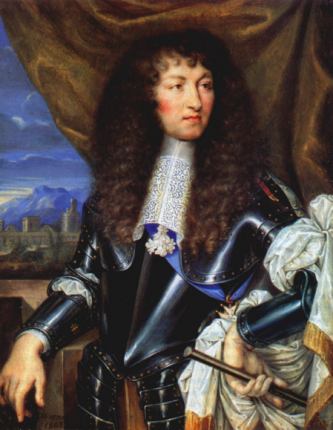
But, so says Monsieur Vallot, he did not doubt that the King would survive the malady, for he knew what strength Louis had. Louis seemed to have been not so sure. As Monsieur Vallot sat with him this night, he had to ensure Louis there was no need to call for a confessor and that he would see the sun rise again.
The Sun King’s condition was very alarming that night, from eleven o’
clock in the evening to about three o’clock in the morning, but then his fever went slightly down. Thus Monsieur Vallot suggested another bleeding. For that, he had Monsieur Guènault, physician to the Queen, woken. There was some discussion about whether a bleeding, with the King being in such a poor condition, was indeed wise. Monsieur Vallot insisted it had to be done, in order to assist the body and bring his Majesty some relief. And relief it brought, according to Monsieur Vallot. Louis felt better came the morning.
“On Friday morning, the King feeling his strength and vigour returning, confessed that he was much better, and that he had been more alarmed than ever, not believing that he would not pass during the night.”
Louis’ condition improved further over the course of the day. Another blood-letting was ordered and done at six o’clock in the evening. By Saturday morning, nearly all symptoms were gone. “On Saturday morning, the King found himself very well upon waking, even without a fever.” Louis’ measles-spots were fading as well and the sweating-fits had stopped.
By Sunday, Louis went somewhat back to business again. He felt a little weak and was given a soup. Then received visitors in bed. “His Majesty received visits and compliments from an influx of people of quality and from the magistrates of Paris, without feeling the least inconvenience in the world, in the same way and with the same vigour as if he had not been ill.”
Things looked even better on Monday, June 4. Louis devoured some soup, had a clyster and decided at around five o’clock in the afternoon that he felt well enough to get dressed and walk about a little. Which he did the following three hours “without feeling weak.” On Tuesday, things were almost back to normal again. Louis spent the majority of the day out of bed, held a council meeting, which lasted nearly 2 hours, ate normally and entertained himself with a walk in the gardens. By Wednesday, Louis had regained most of his strength, was meeting his ministers on matters of State, and was feeling no longer any discomfort.
Louis and Marie-Thérèse d’Autriche left Versailles for the Louvre on June 9. By then, Louis was feeling perfectly fine again and welcomed in Paris by people of quality and importance, who all congratulated him on his recovery.

